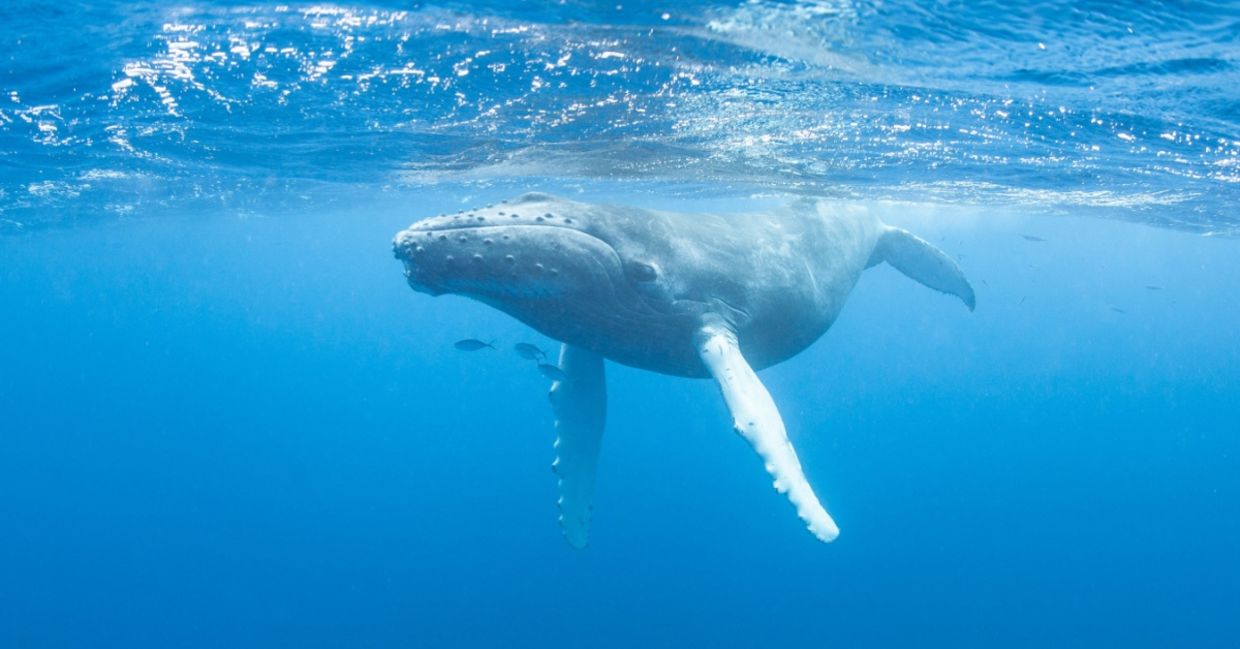
(Ethan Daniels / Shutterstock.com)
In ancient times, sailors would hear eerie, deep, haunting sounds extending from the depths of the sea to across the ocean’s surface. These seamen attributed the evocative noises to ghosts and spirits, the blog Sound of Life reveals.
Only in recent decades did scientists uncover the source of these plaintitive tunes. In 1967, biologists Roger Payne and Scott McVay first identified the noises as whale songs. Since then, researchers have been studying the range, meanings, and logistics behind the whales’ expressive and deep tunes. A recent and groundbreaking study revealed just how whales are able to produce these noises when underwater.
The ancient baleens
Baleen whales, according to BBC, are a genus that includes the humpback whale, gray whale,and minke whale among a dozen others. The category is thus named because these hulking ocean mammals all have baleens instead of teeth. They use their baleens like sieves to strain out plankton and small ocean creatures for food.
Professor Coen Elemans, a researcher who took part in the study, told the BBC, that these whales are some of, “the most enigmatic animals that ever lived on the planet. They are amongst the biggest animals, they're smart and they're highly social.”
Baleen whales, The Conversation reports, have inhabited planet Earth for more than 18 million years and the genus is host to the blue whale, the largest animal to ever live on Earth.
Although these oceanic titans were once upon a time severely endangered due to whaling, today their numbers are slowly increasing again, according to NOAA data.
The song of the whales
The researchers studying the baleen’s haunting songs took apart three whale carcasses that had washed up on the beaches. They removed the larynxes from these carcasses, which included a minke, humpback, and sei whale, and looked for the larynx structures involved in making sounds, BBC reports.
They found a fat-covered, u-shaped organ near the larynx that resonated with the iconic, eerie whale noises when they blew air through it. This organ not only vibrated in specific frequencies, creating whale song, but also prevented the whales from inhaling water while singing.
Dr Ellen Garlands of the Sea Mammal Research Unit and the University of St. Andrews told BBC that the methods used in the study were extremely creative
“Studying large whales is extremely challenging at the best of times,” she explained. “But trying to uncover how they produce sound when you may not even be able to see them underwater while vocalizing is an added level of difficulty, so these researchers have been very creative.”
Dr Kate Stafford from Oregon’s State University also praised the research calling it “groundbreaking.” She said, “The production and reception of sound is the most important sense for marine mammals, so any studies that elucidate how they make sounds has the potential to move the field forward.”
Oceanic “noise pollution”
However, the study also shed light on how human activity may affect the still-endangered baleen whale population. Researchers found that the whale’s “voice box” could only produce sounds at a narrow band of frequencies.
Unfortunately, these frequencies overlapped with the sounds made by ships passing through whale territory.
Elemans cautioned that this noise interference could affect baleen whales’ abilities to communicate with each other across distances and find mates. "Sound is absolutely crucial for their survival, because it's the only way they can find each other to mate in the ocean,” he said. the BBC, “They cannot simply choose to, for example, sing higher to avoid the noise we make in the ocean.”
Ellen Coombs, a postdoctoral fellow at the Smithsonian National Museum of Natural History, told CNN that “Many baleen whale populations are starting to increase in number thanks to the ending of commercial whaling by most countries — but it looks like these magnificent animals are now dealing with the next man-made challenge, and it’s a noisy one.”
The ancient mystery of haunting sounds from the depths of the sea, once attributed to ghosts and spirits by ancient sailors, has been unraveled by modern science. Now, it’s up to modern science to unravel how to keep the oceans quiet from human activity and preserve the majestic behemoths behind the haunting tunes.
YOU MIGHT ALSO LIKE:
Amazing Footage of a Humpback Whale Birth Released
Hauntingly Beautiful Whale Song is Used for Exploring
Rerouting Shipping Lanes to Benefit Whales







